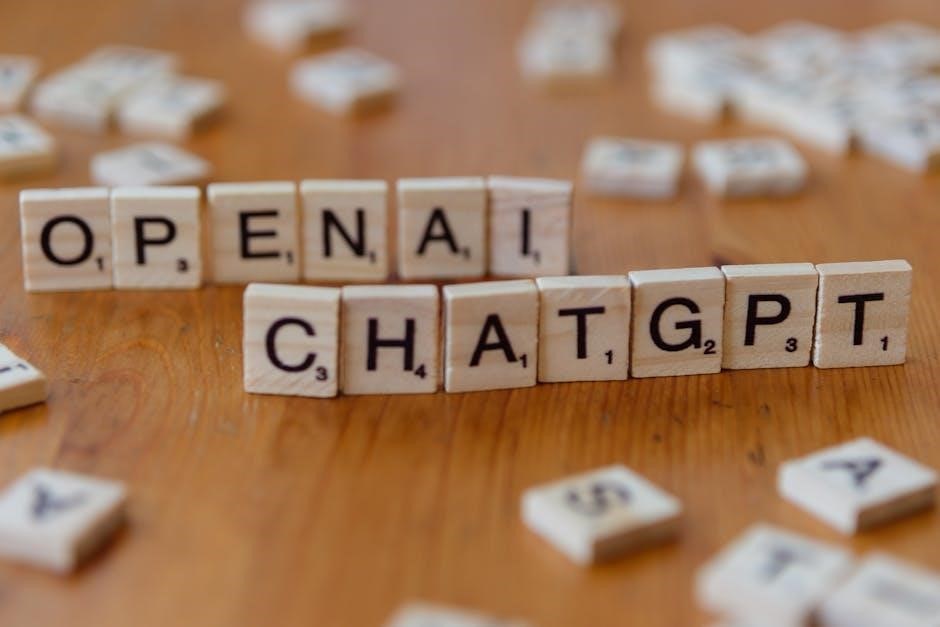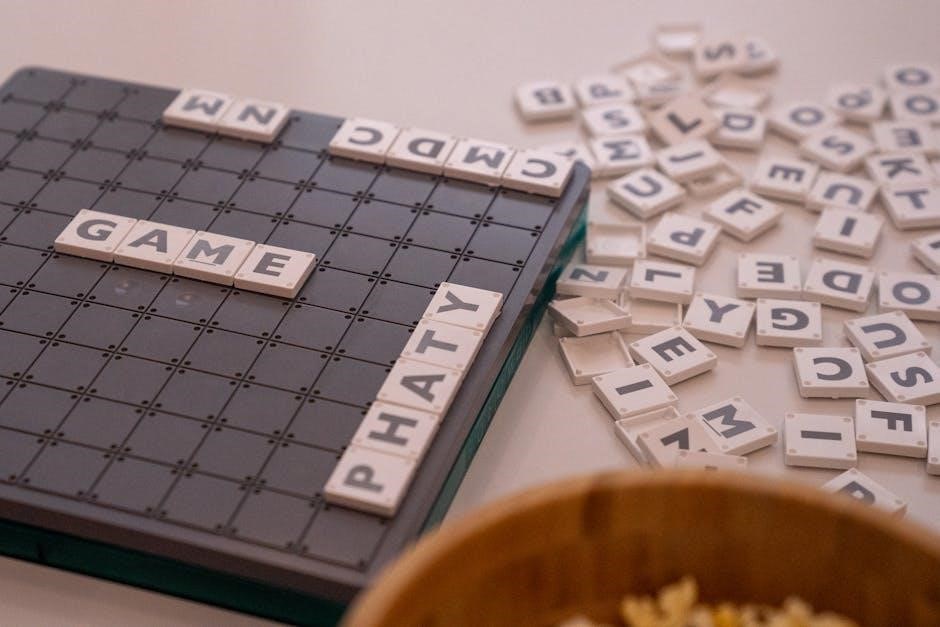Year 4 spelling words are a structured approach to mastering essential vocabulary, focusing on 100 high-priority words. These include common exceptions and tricky spellings, aligning with the national curriculum for accurate and confident writing.
Overview of Year 4 Spelling Curriculum
The Year 4 spelling curriculum is designed to build on foundational skills while introducing more complex vocabulary and spelling patterns. It focuses on mastering a structured list of words, including statutory spelling lists and common exception words. The curriculum emphasizes the importance of accurate spelling in writing fluency and vocabulary expansion. Key components include word-level skills, such as spelling rules, prefixes, and suffixes, as well as strategies to tackle tricky words. The curriculum is divided into weekly spelling lists, often provided in PDF formats, to help teachers and parents track progress. These resources are organized into categories, such as plurals, suffixes, and high-frequency words, ensuring a balanced approach to spelling development. By the end of Year 4, students are expected to confidently spell a wide range of words, including those from Lists 1-4 and many from Lists 5-7. Regular practice and revision are encouraged to reinforce learning and build spelling mastery.
Importance of Mastering Spelling Skills
Mastering spelling skills is crucial for Year 4 students as it significantly impacts their writing fluency and overall academic performance. Accurate spelling enhances communication, allowing ideas to be expressed clearly and confidently. It also supports reading comprehension, as recognizing words aids in understanding texts. Spelling mastery reduces errors, enabling students to focus on creativity and content in their writing. Additionally, it builds a strong foundation for future academic success, as complex vocabulary and writing tasks become more demanding. Regular practice with resources like Year 4 spelling PDFs helps students develop muscle memory and improve their spelling abilities. By emphasizing the importance of spelling, teachers and parents can foster a love for language and learning, ensuring students are well-prepared for challenges ahead.

Key Components of Year 4 Spelling
Year 4 spelling focuses on statutory lists, common exceptions, and spelling rules. It includes suffixes, prefixes, and tricky words, with resources like PDFs providing structured practice to enhance learning and fluency.
Statutory Spelling Lists for Year 4
The statutory spelling lists for Year 4 are a core part of the curriculum, containing 100 high-priority words. These include words like accidentally, address, and believe, focusing on common exceptions and tricky spellings. By the end of Year 4, students are expected to spell most words from Lists 1-4 and some from Lists 5-7. The lists are designed to build upon previous learning, introducing more complex patterns and rules. Resources like Year 4 spelling PDFs provide structured practice, often categorizing words into weekly tests and activities. These lists emphasize accuracy and fluency, preparing students for more advanced writing. Regular revision and practice are encouraged to master these essential words, which are fundamental for confident and correct spelling in everyday writing tasks.
Common Exception Words
Common exception words are a key focus in Year 4, requiring memorization due to their irregular patterns. These words, such as because, friend, and breathe, don’t follow standard spelling rules. They are crucial for building a strong foundation in spelling and writing. Year 4 spelling PDFs often highlight these words, providing specific exercises for practice. Regular revision and multi-sensory approaches help students commit them to memory. Activities like writing them in sentences and using visual aids reinforce learning. These words are frequently tested and appear in statutory lists, ensuring students can spell them accurately. Mastering common exceptions boosts confidence and enhances overall writing skills, making them a priority in Year 4 spelling curricula.

Spelling Rules and Patterns
Spelling rules and patterns are fundamental to Year 4 spelling, helping students decode and spell words confidently. Key rules include adding -s or -es for plurals, changing -f to -ves in words like wolf to wolves, and using suffixes such as -able and -ment. Patterns like silent letters in island or knock, and vowel digraphs in boat or rain, are also emphasized. These rules guide students in understanding word structures and predicting spellings. Year 4 spelling PDFs often categorize words by these patterns, making learning systematic. By mastering these rules, students can spell unfamiliar words more accurately and develop a stronger foundation for lifelong literacy.

Year 4 Spelling Lists and Resources
Year 4 spelling resources include comprehensive PDF lists, worksheets, and activities. These tools provide structured practice for tricky and exception words, supporting regular spelling routines and engaging learning experiences.
Structure of the Year 4 Spelling PDF
The Year 4 Spelling PDF is organized into weekly lists, each containing 15-. These lists are categorized by phonetic patterns, common exceptions, and tricky spellings. Each week’s words are accompanied by activities such as writing sentences, identifying patterns, and practice exercises. The PDF also includes review sections to reinforce previously learned words. Additional resources like word searches and crossword puzzles are incorporated to make learning engaging. A progress tracker is included for monitoring improvement over time. This structured format ensures consistent practice and mastery of spelling skills throughout the year.
Weekly Spelling Tests and Worksheets
Weekly spelling tests and worksheets are essential tools for reinforcing Year 4 spelling skills. These resources are designed to align with the statutory spelling lists and common exception words. Each test typically includes a list of 15-, focusing on specific patterns or rules. Worksheets often feature activities such as writing words in sentences, identifying misspelled words, and completing word searches or crosswords. Many resources include answer keys for easy marking and progress tracking. Digital versions allow for interactive practice, while printable worksheets provide a traditional learning experience. Regular testing helps identify areas for improvement and builds confidence. Parents and teachers can use these tools to create a consistent learning routine, ensuring students master the curriculum and develop strong spelling habits. Over time, these weekly exercises contribute to improved writing fluency and accuracy.
Free Year 4 Spelling PDF Downloads

Free Year 4 spelling PDF downloads are widely available, offering a comprehensive collection of over 700 spelling words. These resources are carefully categorized to include common, tricky, and exception words, ensuring alignment with the national curriculum. Many PDFs feature structured weekly lists, ideal for consistent practice and progress tracking. They often include activities such as word searches, crossword puzzles, and sentence-writing exercises to engage learners. Some downloads also provide answer keys, making it easier for parents and teachers to assess progress. These PDFs are designed to support both classroom and home learning, offering flexibility and convenience. By utilizing these resources, students can build confidence and mastery over challenging spellings. Free Year 4 spelling PDFs are a valuable tool for fostering literacy skills and ensuring students meet curriculum expectations. They are easily accessible and printable, making them a popular choice for educators and parents alike.

Teaching and Learning Strategies
Effective Year 4 spelling strategies include interactive games, hands-on activities, and multi-sensory techniques. These methods engage students, making learning enjoyable and tailored to different learning styles, ensuring progress and mastery of spelling skills.
Effective Spelling Strategies for Year 4
Effective spelling strategies for Year 4 focus on engaging and interactive methods to enhance learning. One popular approach is using phonetics, where students identify sounds and patterns within words. This helps in decoding and encoding spellings accurately. Another strategy is the “Look, Say, Cover, Write, Check” method, which encourages active recall and self-correction. Incorporating spelling games, such as word searches, crossword puzzles, and bingo, makes practice enjoyable and motivating. Additionally, multi-sensory techniques like tracing words in sand or air, along with using mnemonic devices, can aid memory retention. Regular practice with word lists and weekly spelling tests helps build fluency. Teachers also emphasize the importance of understanding word meanings and usage in sentences, fostering both spelling accuracy and linguistic confidence. These strategies collectively create a well-rounded approach to mastering Year 4 spelling skills.
Using Games and Activities to Reinforce Learning
Games and activities are dynamic tools for reinforcing Year 4 spelling skills, making learning engaging and fun. Word searches, crossword puzzles, and anagrams are popular choices, encouraging students to explore and interact with spelling words creatively. Spelling bingo and memory games add an element of competition and excitement, while also improving retention. Digital tools like online spelling challenges and apps offer interactive exercises tailored to individual needs. Hands-on activities, such as writing words on whiteboards or using magnetic letters, provide tactile experiences that enhance memory. Role-playing and group challenges foster collaboration and teamwork, turning spelling practice into a shared adventure. These methods not only make learning enjoyable but also cater to different learning styles, ensuring that every student can thrive in their spelling journey.
Multi-Sensory Approaches to Spelling
Multi-sensory approaches to spelling engage students by incorporating visual, auditory, tactile, and kinesthetic learning methods. These techniques help Year 4 students connect with spelling words on multiple levels, enhancing retention and understanding. Tactile activities, such as writing words in sand, shaving cream, or using magnetic letters, allow students to “feel” the spelling process. Visual aids like flashcards, word walls, and colorful posters provide constant reminders of key words. Auditory methods, such as chanting or rhyming games, help students hear and remember patterns. Kinesthetic exercises, like jumping rope while spelling or acting out word meanings, make learning active and memorable. Combining these methods creates a comprehensive learning experience, catering to diverse learning styles and making spelling practice more engaging and effective. This approach not only builds confidence but also ensures that students retain spelling skills long-term.

Challenges in Year 4 Spelling
Year 4 spelling presents challenges with tricky and exception words, common mistakes, and building confidence. Mastery requires consistent practice, repetition, and strategies to overcome difficulties in spelling complex patterns and irregular words effectively.
Tricky and Exception Words
Year 4 spelling lists include numerous tricky and exception words that don’t follow standard spelling rules, posing challenges for students. These words, such as “because,” “necessary,” and “definitely,” often require memorization rather than phonetic patterns. Exception words like “accidentally” and “address” are emphasized in the curriculum, with a focus on accurate spelling despite their irregularities. Resources like Year 4 spelling PDFs highlight these words, providing targeted practice to help students master them. Regular revision and the use of strategies like mnemonics or word mapping can aid in overcoming these spelling hurdles, ensuring students build a robust vocabulary and improve their writing confidence.
Common Spelling Mistakes
Year 4 students often encounter common spelling mistakes, particularly with tricky and exception words. These errors frequently occur due to confusing letter patterns, silent letters, or irregular spellings. Words like “their,” “there,” and “because” are often mis-spelled due to their unconventional structures. Additionally, students may struggle with homophones, such as “to,” “too,” and “two,” leading to frequent mix-ups. Resources like Year 4 spelling PDFs highlight these problem areas, providing targeted exercises to address them. Teachers and parents can use these tools to identify and correct mistakes early, ensuring students build a strong foundation in spelling. Regular practice and feedback are essential to help students overcome these challenges and improve their spelling accuracy over time.
Building Confidence in Spelling
Building confidence in spelling is crucial for Year 4 students, as it fosters a positive attitude toward writing and communication. Encouraging a growth mindset helps students view challenges as opportunities to learn rather than sources of frustration. Positive reinforcement, such as praising effort and progress, plays a significant role in boosting self-assurance. Interactive games, quizzes, and activities make spelling practice engaging and fun, reducing anxiety. Providing opportunities for students to use their spelling words in meaningful contexts, such as creative writing or sentence construction, helps them see the practical value of their skills. Additionally, celebrating small achievements and offering constructive feedback can significantly enhance their confidence. By creating a supportive environment, both at school and home, students are empowered to approach spelling with enthusiasm and resilience, laying a strong foundation for long-term success.

Supporting Year 4 Spelling at Home
Parents can effectively support Year 4 spelling by using spelling PDFs for practice, creating a daily routine, and incorporating interactive games and quizzes to make learning engaging and consistent.
Parental Involvement in Spelling Practice
Parents play a crucial role in reinforcing Year 4 spelling skills through consistent practice at home. Using Year 4 spelling words PDFs, parents can access structured lists and activities to support their child’s learning. Encourage daily practice by dedicating 10-15 minutes to spelling exercises, such as writing words, creating flashcards, or using interactive games. Parents can also incorporate spelling into daily routines, like writing shopping lists or sentences together. Positive reinforcement is key—celebrate progress and provide constructive feedback. Utilize online tools and apps to make practice engaging and fun. By working collaboratively with teachers and maintaining open communication, parents can help their child build confidence and mastery in spelling. Regular practice at home ensures that children stay on track and develop a strong foundation for future academic success.
Creating a Home Spelling Routine
Establishing a consistent home spelling routine is essential for Year 4 students to master their spelling words effectively. Begin by setting aside a specific time each day, such as 15 minutes before bedtime or after dinner, dedicated solely to spelling practice. Use Year 4 spelling words PDFs to access structured lists and activities, ensuring a focused approach. Start with a quick review of previous words to reinforce retention, then introduce new words. Incorporate a variety of methods, such as writing the words, creating flashcards, or using online games. Encourage your child to spell words aloud and provide immediate feedback. Make it engaging by turning practice into a game or competition. Consistency is key, so maintain the routine throughout the week. Over time, this structured approach will help build confidence and improve spelling accuracy.

Using Digital Tools for Spelling Practice
Digital tools have transformed spelling practice, offering engaging and interactive ways for Year 4 students to master their spelling words. Platforms like Sumdog and Spelling Shed provide personalized learning experiences, allowing children to practice at their own pace. These tools often include games, quizzes, and audio-visual aids to make learning fun and effective. Many apps and websites offer spelling lists tailored to Year 4, complete with progress tracking and rewards for motivation. Parents can download spelling apps that incorporate the Year 4 spelling words PDF lists, ensuring consistency with school curriculum goals. Additionally, some tools allow for multi-sensory learning, combining visual, auditory, and kinesthetic approaches to cater to different learning styles. By leveraging technology, spelling practice becomes more dynamic and accessible, helping students achieve their goals while staying engaged and motivated.

Assessment and Progress Tracking
Regular spelling tests and PDF worksheets help monitor progress, ensuring students master Year 4 spelling words. Tracking tools allow teachers and parents to set realistic goals and celebrate achievements effectively.
Monitoring Progress in Spelling
Monitoring progress in spelling is crucial for identifying strengths and areas needing improvement. Regular spelling tests and PDF worksheets provide consistent feedback, allowing teachers and parents to track mastery of Year 4 spelling words. By reviewing test results, educators can adjust teaching strategies to address common mistakes and reinforce challenging words. Progress tracking also helps set realistic goals, ensuring students stay motivated and confident in their spelling abilities. Celebrating small achievements fosters a positive learning environment and encourages continued effort. Over time, this systematic approach ensures students build a strong foundation in spelling, essential for their academic success. Using digital tools and printable resources, monitoring progress becomes efficient and engaging, making it easier to support each student’s unique learning journey.
Setting Realistic Goals for Improvement
Setting realistic goals for spelling improvement helps students stay focused and motivated. Break down the Year 4 spelling list into manageable groups, targeting a few words each week. Create specific, achievable objectives, such as mastering five new words weekly or reducing common mistakes. Regular practice and review ensure steady progress. Celebrate small milestones, like perfect scores on weekly tests, to build confidence. Tailor goals to individual needs, addressing tricky or exception words that pose challenges. Use spelling PDF resources to track achievements and identify areas for further practice. By setting clear, attainable targets, students develop a growth mindset and maintain enthusiasm for learning. This structured approach ensures consistent improvement and prepares them for more complex spelling tasks in higher grades.
celebrating Achievements
Celebrating achievements in Year 4 spelling is crucial for building confidence and motivation. Recognize progress, no matter how small, to encourage a positive attitude toward learning. Use the Year 4 spelling words PDF to track improvements and highlight mastered words. Verbal praise, stickers, or certificates can be effective ways to celebrate milestones. Create a “Spelling Success” chart or journal where students can record their achievements, fostering a sense of pride in their accomplishments. Celebrating also reinforces the importance of perseverance and hard work. Share successes with parents or classmates to further motivate learners. By acknowledging achievements, students develop a growth mindset and are inspired to tackle more challenging spelling tasks. This positive reinforcement helps create a lifelong love for learning and improves overall academic confidence.